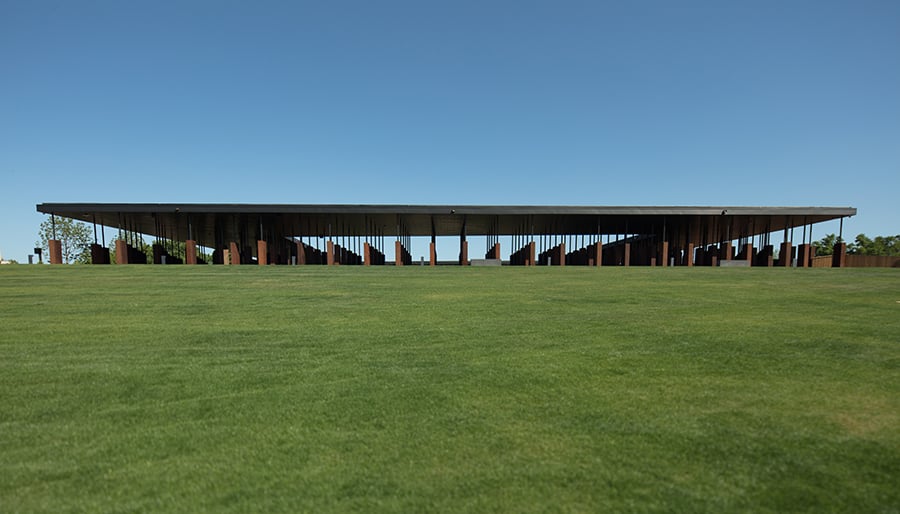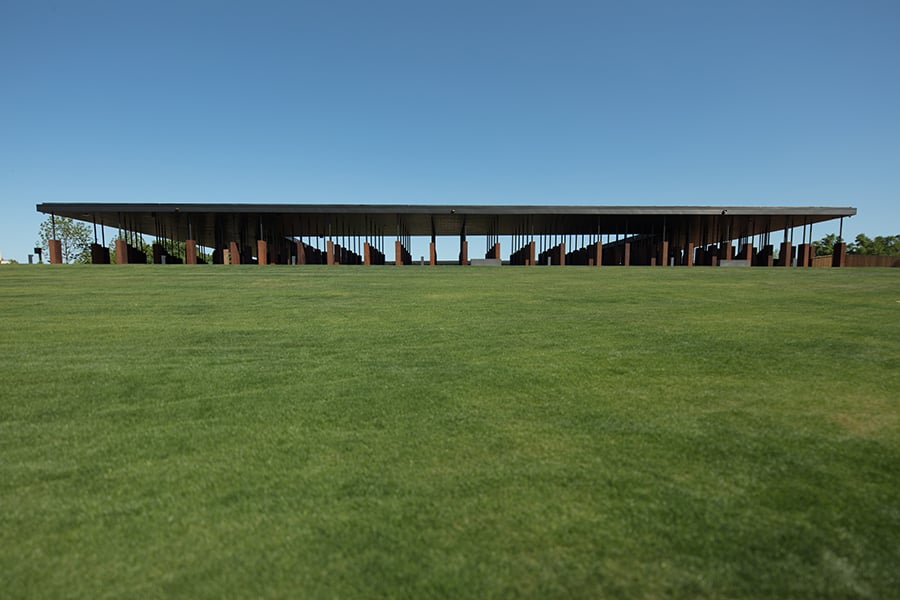
April 26, 2018
National Memorial for Peace and Justice Opens in Montgomery, Alabama
The memorial features a large structure—designed with the assistance of MASS Design Group—dedicated to victims of lynchings in the American South.

Today, the National Memorial for Peace and Justice, the first national memorial dedicated to the victims of slavery, lynchings, police violence, and injustice within the criminal justice system, opened just outside the downtown of Montgomery, Alabama. The memorial was commissioned by the Equal Justice Initiative (EJI), a Montgomery-based nonprofit legal aid and advocacy group. The monument also features a central structure, designed with the assistance of Boston-based architecture firm MASS Design Group (the firm’s founder, Michael Murphy, is a 2011 Metropolis Game Changer), that’s dedicated to victims of lynchings.
The project, which began in 2010, is based on years of detailed research into lynchings that occurred across the American South. The memorial starts with a series of sculptures that depict the horrors of slavery, then proceeds with a selection of texts and individual monuments that craft a historical narrative culminating with the MASS-designed central memorial, which features 800 suspended weathered steel columns.
Each columns represents one state county and is engraved with the name of lynching victims (sometimes listed as “unknown”) from that county. In total, there are some 4,400 lynching victims listed. Visitors enter the space at eye-level with the columns, though the walkway gradually descends such that the columns ultimately dangle overhead. The memorial goes on to highlight the Civil Rights Movement and present-day racial injustices with additional sculptures and texts.
According to the New York Times, the EJI was inspired by Berlin’s Holocaust Memorial and Johannesburg’s Apartheid Museum. In a press release, the organization says it “believes that publicly confronting the truth about our history is the first step towards recovery and reconciliation.”
In addition to inaugurating the memorial, the EJI is also opening a new exhibition at its museum (also located in Montgomery), titled The Legacy Museum: From Enslavement to Mass Incarceration. The exhibition similarly delves into “the enslavement of African Americans, the evolution of racial terror lynchings, legalized racial segregation, and racial hierarchy in America” though re-creations of slave pens, first-person accounts of the slave trade, and video installations, including one that lets visitors virtually talk to inmates on death row.
EJI founder Bryan Stevenson, speaking to the Times, says that facing the legacy of slavery and injustice is challenging in the United States, especially since he believes Americans expect punishment for admitting fault.
“I’m not interested in talking about America’s history because I want to punish America,” he told the Times. “I want to liberate America. And I think it’s important for us to do this as an organization that has created an identity that is as disassociated from punishment as possible.”
You may also enjoy “Qatar’s Msheireb Museums Pioneer a New Kind of Middle Eastern Cultural Architecture.”









